By ALAN HUFFMAN
The stunning restoration of this treasured antebellum home in the South Delta
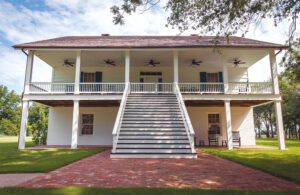
“Typically, when someone takes on a building like this, it’s a rehabilitation. You’re preserving it and adapting it. A restoration is different. It means doing your best to put a building back to its original use and form. That’s what Franc did with Georgianna. And to do that, he brought in the A-team.” – Lolly Rash, Mississippi Heritage Trust executive director
In the winter of 2017, the Mississippi Heritage Trust published what could easily have been an obituary for the old Sharkey County house known as Georgianna. Built on the banks of Deer Creek in the 1850s, the house suffered from vandalism, storm damage, and natural deterioration over the decades. All that really remained was a massive, intriguing husk, seemingly verging toward collapse.
Yet the Weissinger family, which had owned Georgianna for more than a century, wasn’t ready to give up, and, in a last-ditch effort, offered to donate the structure and surrounding site to anyone who would undertake a restoration. It was a long shot, at best. What sort of person would sink a small fortune into an isolated, derelict, two-and-a-half story house “out from Cary?”
By then, I’d been keeping tabs on Georgianna for decades, having come upon the house during a weekend outing in the 1990s. Each time I approached on the Cary-Blanton Road, I wondered if it would still be there. I wrote an article, at the time, in hopes someone would step forward to take up the Weissingers on their offer and save Georgianna.
Though the family had done some strategic stabilization over the years, there were fault lines in the ground floor walls that threatened to reduce the entire structure to a pile of lumber, tin, and bricks. As things were going, it looked like the house would end up like all of the other historic structures along the road, which had literally fallen by the wayside. A sister house, Lochwood plantation, which faced the Mississippi River about five miles to the west and was built by the same antebellum cotton planter, was likewise gone, destroyed by a tornado in 1971. Georgianna and its two vacant former slave dwellings were all that was left. Finding someone to restore the house fit the mission of the Mississippi Heritage Trust, said its director, Lolly Rash. “Georgianna was one of the few buildings of this architectural integrity and age left in the Delta,” she said. “And it was still hanging on. Plus, it had a tremendous story to tell.”
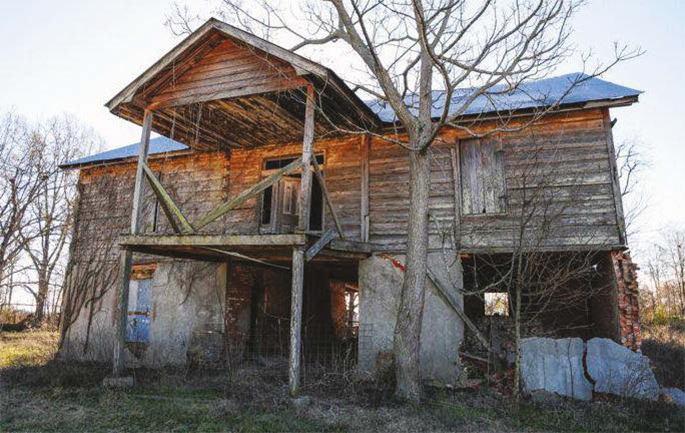
At the time, Charles Weissinger said that no one in his family had the means to undertake a full restoration but that they valued the house, which was why they were willing to part with it. “My father had a long, deep, and abiding love for these old structures,” he said. “He felt it was his duty to be a steward.” Among many stopgap measures, the family had repaired the roof, patched cracks in the foundation as best they could, and nailed tin over gaping window openings to buy some time. The offer to donate the house was a final gesture of hope.
Anyone with experience restoring and maintaining historic buildings knows that “free” is a relative term, but Georgianna is unlike many plantations in that it was a rustic, absentee-owned plantation house. It was a secondary investment, and its original owners never intended to live in the house year-round, which explains why it was plain and unadorned. It was a grander expression of the simple building style of its original twenty-six slave dwellings, all built of locally fired bricks and milled cypress logs.
When the article ran in the Trust’s Elevation magazine, Francis Clark Lee, of Brandon, read it with great interest. Lee is an avid lover of history and architecture, and has a deep interest in the preservation and restoration of endangered historic structures. He had long been fascinated by David Hunt, who had originally owned the plantation and gave it to his son George and daughter-in-law Anna as a wedding gift in 1857. The elder Hunt was among the five wealthiest cotton planters in the United States before the Civil War. Lee had been exploring the idea of restoring an antebellum plantation house for a while and had looked into saving a similarly endangered one, Prospect Hill, in Jefferson County, as well as another, known as Saragossa, in Natchez. But by the winter of 2017, he was still on the search. As it turned out, he was precisely the kind of person who would sink a small fortune into an isolated, derelict, two-and-a-half story house out from Cary.
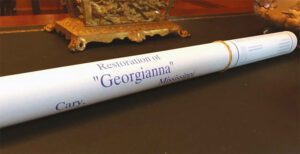
Lee got in touch with Charles Weissinger, then hired architects to survey the house to determine what would be involved in restoring it. So began a preservation odyssey that stretched into more than two years, starting with lengthy negotiations over the transfer of the title, followed by months of painstaking research, many unexpected hitches, and inevitable cost overruns, which Lee said were ultimately worth the effort.
Rash describes the completed project, which was awarded the Trust’s biannual Heritage Award, as “a thrilling, meticulous restoration.” Typically, she said, “When someone takes on a building like this, it’s a rehabilitation. You’re preserving it and adapting it. A restoration is different. It means doing your best to put a building back to its original use and form. That’s what Franc did with Georgianna. And to do that, he brought in the A-team.” Lee’s restoration, which was completed in May 2020, was done by the book, down to minute details such as replicating the original exterior whitewash, the original mortar mix, and the unexpectedly vibrant original paint colors of the trim, as well as rebuilding the ground floor and chimneys, installing a period-correct wood-shake roof, and even recreating the elaborate water-capture system that replenishes a huge original underground cistern.
“I guess my appreciation for history is what prompted me to be so accurate,” Lee said during a visit to the finished house, which now looks as it did when it was brand new, surrounded by freshly installed landscaping. “It’s not just about fixing up an old house to use,” he said. “It’s about creating something that memorializes history and teaches us. I wanted something that educated people about the past.”

The first task of the project was to stabilize the two-foot-thick brick ground floor walls, parts of which had collapsed during high winds, and then to assess the structure’s overall integrity. To guide the project, Lee hired architect Briar Jones of Starkville, the late Michael Fazio as architectural historian, and Raleigh, North Carolina-based George Fore as research conservator. The number of people involved grew from there.
Throughout its history, Georgianna had been a key landmark for a diverse cast of characters, and today, it would once again be easily recognizable to them. In addition to the Hunts, those characters included nearly 150 enslaved workers; Union Navy Rear Admiral David Porter; plantation overseer G.W. Johnson, who was murdered in front of the house during a Reconstruction-era uprising; a freed slave named David Cameron who found refuge inside from a lynch mob; and a multitude of sharecroppers who rode out the infamous 1927 Mississippi River flood on its upper stories. Georgianna is an early house by the standards of the Delta, which, aside from scattered plantations on low ridges bordering navigable waterways, was largely settled in the late nineteenth and early twentieth centuries. It faces Deer Creek, the main transportation link in the era before good roads, and is elevated above periodic inundations by its brick ground floor. The main floor is constructed of dovetailed cypress logs, while the half-story above is framed; both afford expansive views of what was originally a 2,600-acre plantation.

Lee was dubious about replicating some of the historic details, such as the vibrant blue-green color scheme of its external trim and shutters (which, curiously, appear to have originally been installed only on six windows), but he was intent on historical accuracy, with a few asterisks. Necessary additions included electricity and plumbing, central air and heat, and ceiling fans on the galleries. He also installed large TV monitors over each fireplace mantle, which he plans to have framed and sheathed in two-way mirrors to make them less intrusive yet still functional as video screens, and built two new outbuildings. He tried his best to conceal the HVAC infrastructure through strategic landscaping and eschewed physical light switches, instead using a phone app to turn them on and off.
On the day of our visit, in late May, I told Lee that having last seen Georgianna when it was near ruin, coming upon it now felt a bit surreal, as if it had been magically transformed overnight. Yet for him, the process was long, complex, and anything but magical. Among the many challenges was lifting the entire house from its ground floor on massive steel beams so that the brickwork could be completely rebuilt. Another was finding that most of the original bricks were unusable because they were so fragile; most were replaced by new bricks and others retrieved from the chimneys of the burned ruins of Mount Holly Plantation on Lake Washington.
When the restoration was complete, Lee hired interior designers Stephen Bengel and Bryan Houston of West Point to give its rooms the feel of a refined hunting lodge. The antiques, accoutrement, and bric-a-brac now fill rooms once roamed by sheep, snakes, and rats, creating a top-drawer yet otherwise unpretentious atmosphere, in keeping with Georgianna’s history and intended use. Old cypress floors are stained a dark hue to obscure replacement boards in areas that had suffered rot, and in the main hall hangs a framed, photographic copy of a portrait of David Hunt, Georgiana’s decorative centerpiece.
As Lee and I toured the house, Charles Weissinger drove up, having been summoned for the occasion. It was his first time to see the restored house, and after climbing the wide, reconstructed front steps, he told Lee, in obvious understatement, “I like what you’ve done here.” He and Lee then launched into a long discussion about David Hunt and the history of the house.
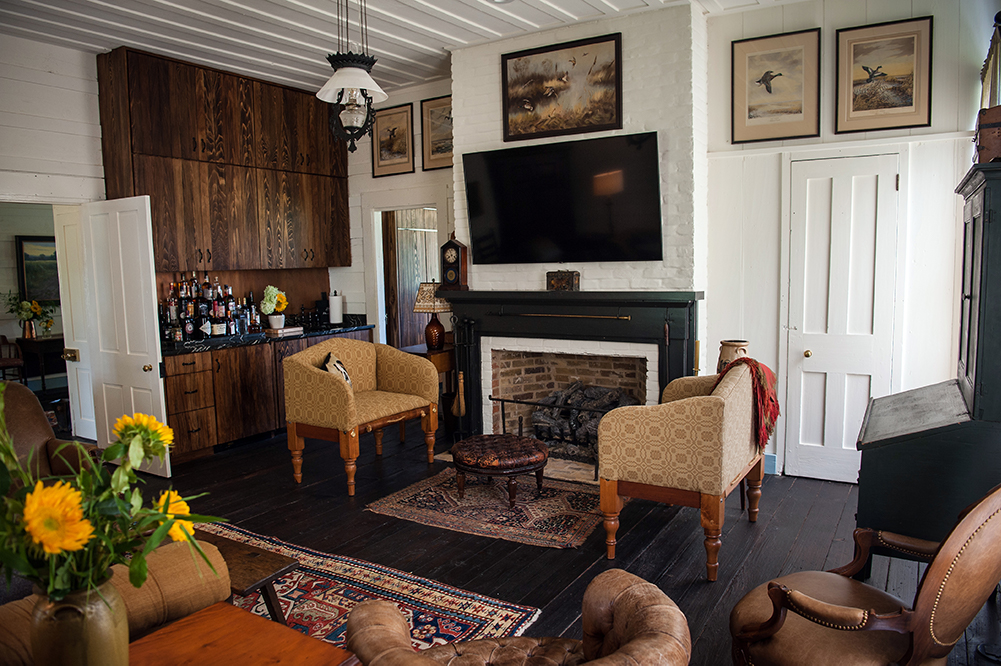
According to historical records, the property on which Georgianna stands was part of an 1835 land grant to Joseph Dunbar and Samuel Mason, who then sold it to Hunt, a Natchez area planter who acquired it for his expanding cotton dynasty. Hunt, nicknamed “King David” due to his wealth and extensive holdings, was a New Jersey native who owned multiple plantations on both sides of the river between Greenville and Natchez. He was also a member of a group known as the American Colonization Society, which was founded to “repatriate” freed slaves before the Civil War to what is today the West African nation of Liberia, including to a colony known as Mississippi in Africa. Hunt’s involvement in the colonization society puts Georgianna in the same historical context as the still-endangered Prospect Hill, whose original owner arranged for the largest group of slaves to immigrate to Mississippi in Africa (Prospect Hill is still in limbo, on the Mississippi Heritage Trust’s 10 Most Endangered Historic Places list).
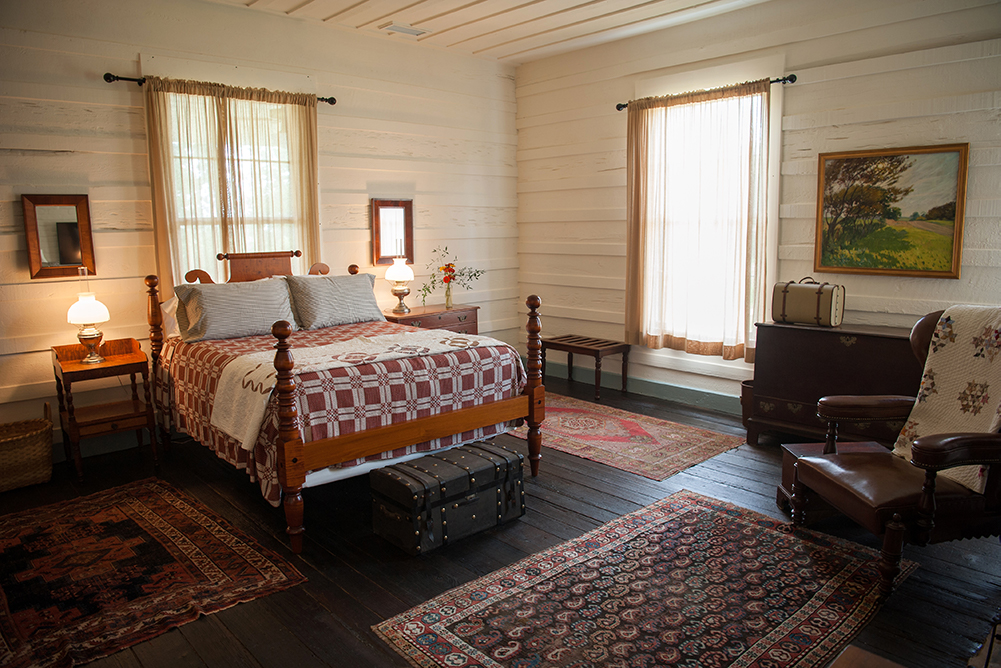

Weissinger said it’s his understanding that when George and Anna Hunt visited their Delta holdings, they usually stayed at Lochwood and that Georgianna was occupied by the plantation overseer. Lochwood was built using the same template—a brick ground floor surmounted by a main floor of milled logs with a frame half-story above. “I have the impression that when they built Georgianna and Lochwood, they’d figured out a way to do cookie-cutter plantations,” Lee said. The Hunts’ permanent home was now-vanished Huntley plantation, downriver in Jefferson County.
At least two of David Hunt’s former slaves were later interviewed and recorded for the Depression-era Works Progress Administration’s slave narratives project and recalled what were, not surprisingly, sometimes very harsh experiences for workers on his plantations. According to the 1860 agricultural census, 147 slaves lived on Georgianna, and during the Civil War, in April 1863, a flotilla of five ironclad gunboats, three troop transports, and two tugboats under U.S. Rear Admiral David Porter tied up at its landing. Notably, George Hunt died in September 1863, at age thirty-five, though Weissinger said he does not know the cause of his death. Accounts vary about another death at Georgianna, of its plantation overseer, G.W. Johnson, who some say was killed during the Union occupation, though others allege he was murdered after the war. Weissinger said he was told the overseer’s death came “at the hands of Yankees,” which he interpreted to mean some of Porter’s men, but said he was also told that Johnson was killed in a shootout with U.S. Colored Troops near Blanton, during a period of violent white pushback against federally enforced black rule. He said a group of white men had formed a militia and the freedmen who occupied Georgianna had requested backup from the U.S. Colored Troops stationed in Vicksburg.
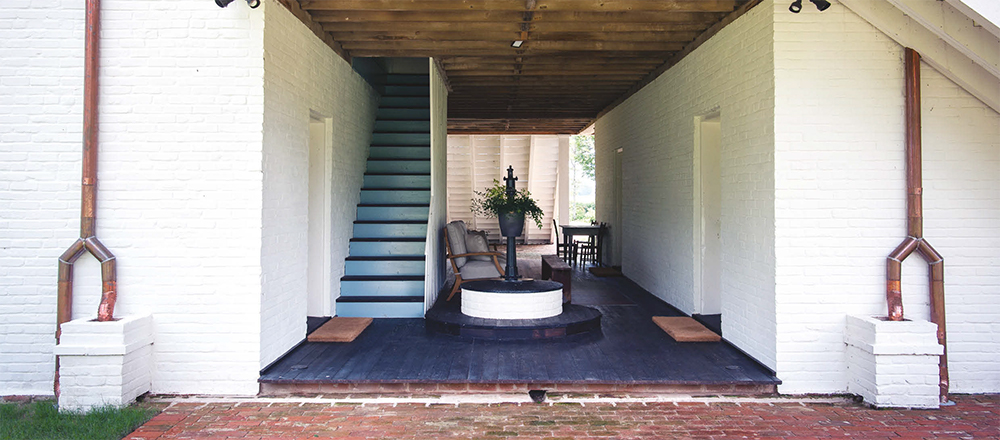

According to one account, by war veteran Col. W.D. Brown, there was a series of attacks on white landowners and overseers along Deer Creek by U.S. Colored Troops in August 1863. The raiders allegedly committed several murders downstream, and, “Continuing northward they next came to what is known as Georgiana plantation, then the property of Mr. George F. Short [actually George F. Hunt]. There they shot to death Mr. Johnson, the overseer of the plantation.” (The spelling of Georgianna varies over time; Lee chose its current spelling as a more direct homage to George and Anna.) The transcripts of congressional hearings into Mississippi’s Reconstruction-era elections include testimony about a second series of murders by vigilantes, as well as race riots, threats of attacks on plantations and towns, and white revenge killings, which prompted residents along Deer Creek to hold a biracial convention “for the purpose of quieting the public feeling on the part of the whites and blacks.” Among the signatories to the post-war convention was David Hunt, the namesake grandson of Georgianna’s original owner, as well as several formerly enslaved plantation workers.
Included in the congressional record is the testimony of a Georgianna sharecropper, David Cameron, who said that after hearing that white vigilantes would be moving through from nearby Rolling Fork, he went to the house late one night seeking protection. Cameron recalled that “Mr. Hunt came out with his slippers on,” and after hearing his concerns, invited him inside to stay the night. Hunt reportedly told Cameron that he could do nothing to help workers who had been involved in racially motivated crimes, and, in fact, a group of white men rounded up several black men from the former slave quarters and killed two of them. At the time, according to another sharecropper’s testimony, about one hundred black residents lived and worked on Georgianna, with David Hunt the lone white resident.
The Hunt family held on to Georgianna through the economic crash that followed the Civil War but in 1912 sold it to two local business partners, one of whom handed it down through the Weissinger family line. By 1927, the plantation manager, who was living in the main house, evacuated from the flood, enabling scores of sharecroppers to find refuge in its upper floors. In the 1940s, when rural electrification came, Weissinger’s grandfather decided that wiring Georgianna would be an insurmountable task, so he had two of the slave dwellings moved together to create a dogtrot in which the farm manager lived until that structure burned. “My daddy cried when that house burned,” Weissinger said. Until Lee took ownership, no one had lived in Georgianna since about 1950, he said.
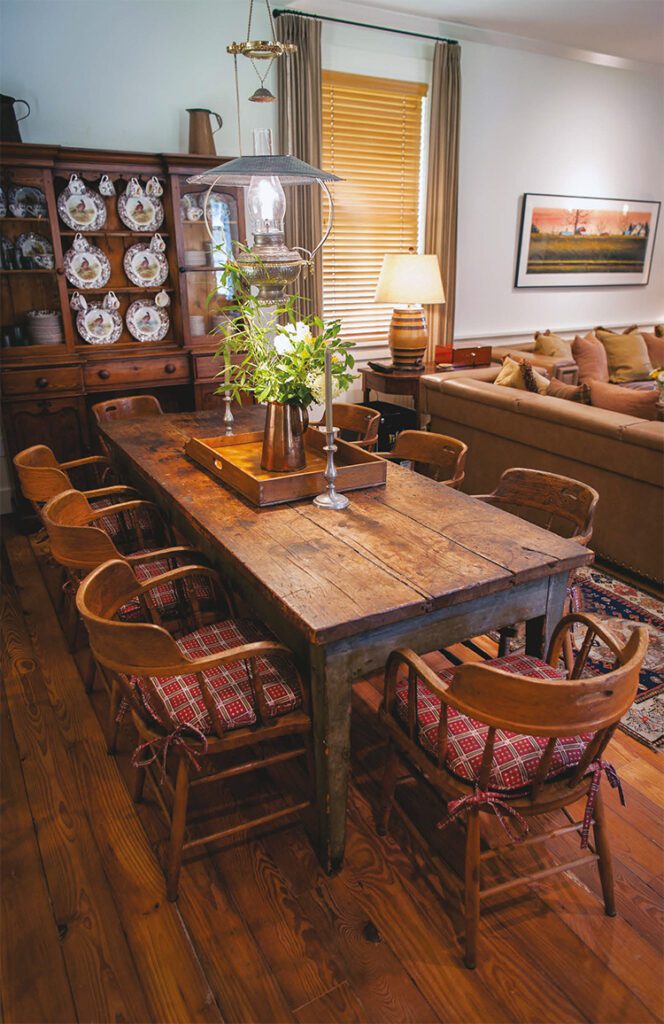

Lee said it was important to preserve the house both as an architectural treasure and as a repository of a long and conflicted history, though it will not be used for a museum or open for public tours. The point, he said, was to save it. It will now be leased to a hunting club in which Lee is a member, though he does not personally hunt. The new outbuildings include a large den and a locker room to separate hunting-related activities from the main house.
The list of people involved in Georgianna’s restoration “is virtually endless,” Lee said. It includes Mid State Construction, woodworkers Don Reihle, Kevin Yoder, and Tim Daniels, and crews assembled by local resident Frank Stewart, whose family owns the site of Lochwood. The Mississippi Department of Archives and History also advised on the work to ensure its eligibility for the National Register of Historic Places, which grants tax incentives for costs associated with restoring listed historic structures for commercial use. Lee said he is particularly grateful to Charles Weissinger and his family’s corporation, The Powers Company, for donating the house, and to the Mississippi Heritage Trust for alerting him to its availability.
Regarding the latter, Rash observed, “I’m proud of the fact that we brought it to Franc’s attention and that Georgianna found the right person at the right time.” The restoration was a remarkable success story, she said, adding that when the house seemed destined to be lost, “Franc stepped forward to be the steward of this historic place for the next chapter of its history.”
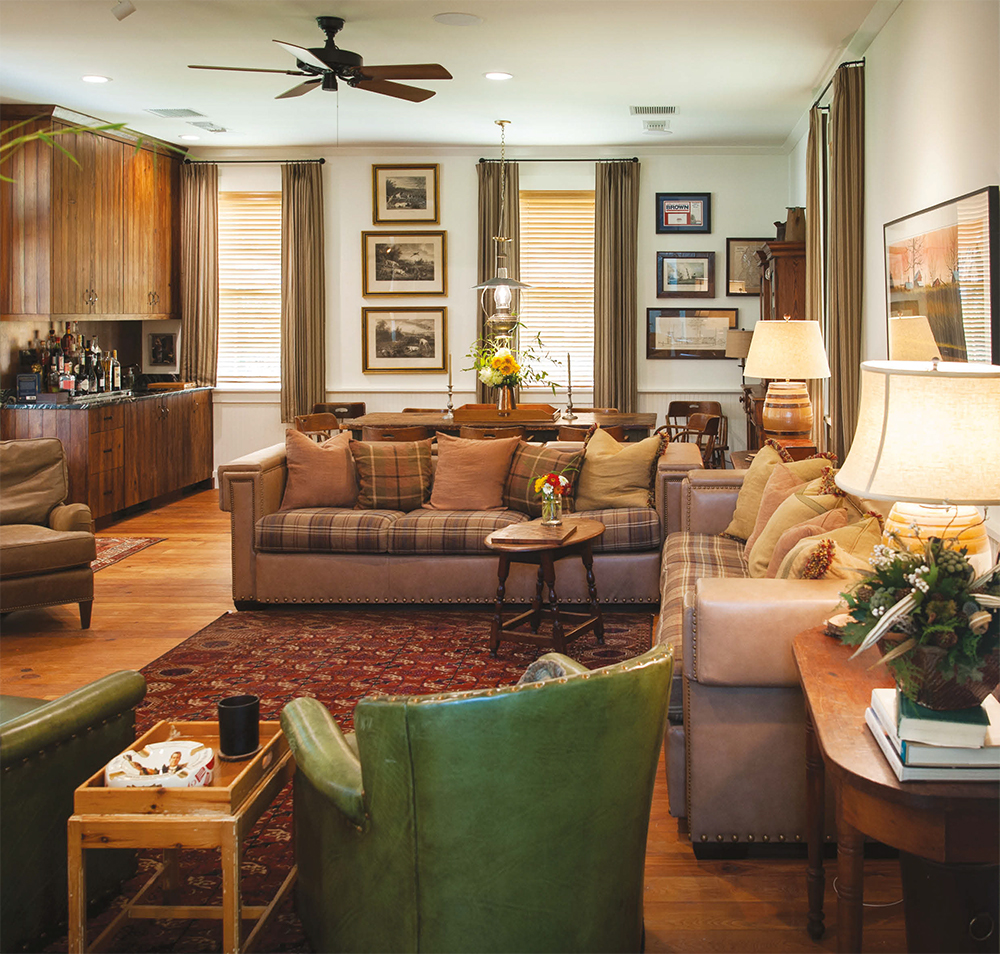
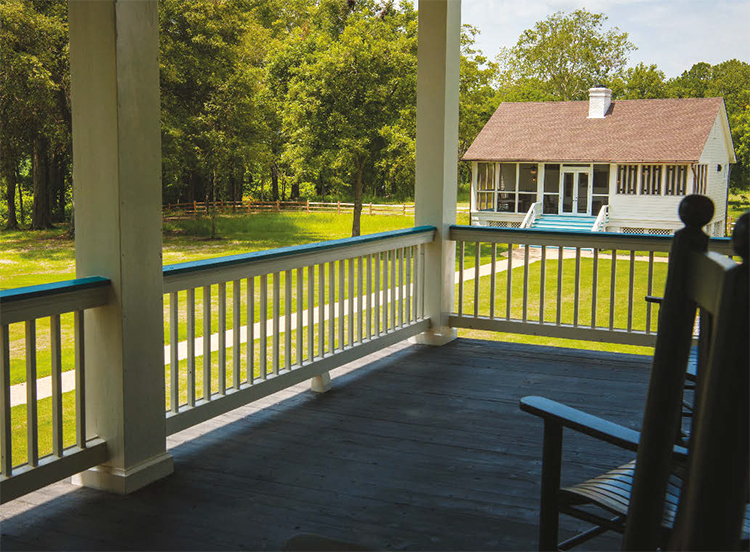
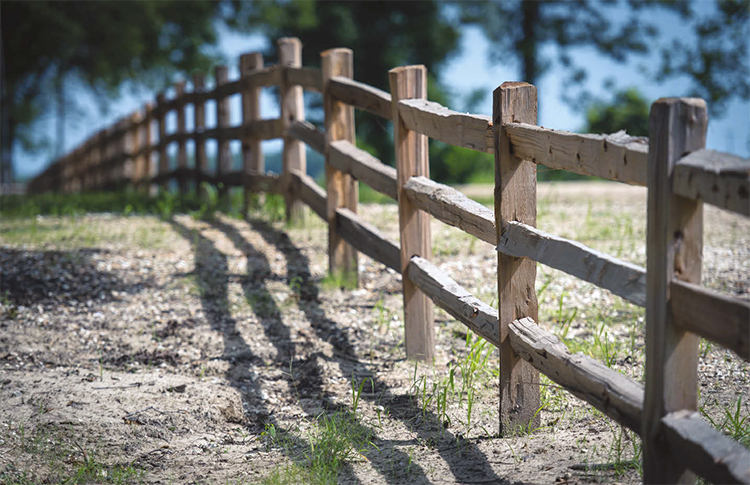




2 thoughts on “Saving Georgianna”
What a fabulous undertaking! Thank you for preserving this for Mississippi!
Love it coming from a lady who’s name is Georgiana